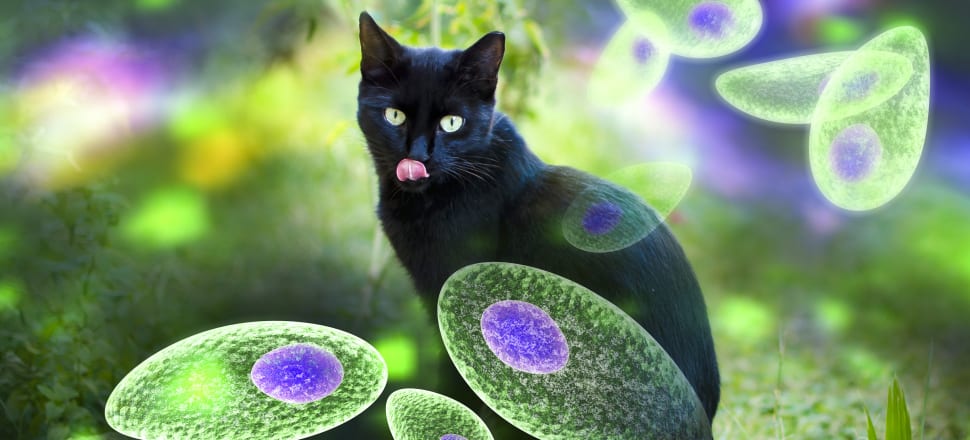
One of only two human parasitology research labs in NZ will soon close for want of funding, but if we don’t urgently invest in dealing with parasitic threats we will suffer the consequences. We should not wait for the next cryptosporidium outbreak, argues Dr Remy Muhsin et al
Opinion: In the serene brochure landscapes of New Zealand, where lush greenery and pristine waters often take centre stage, a silent menace has long been at work – parasites. Recent events, such as the cryptosporidium outbreak in Queenstown and the tragic deaths of rare dolphins on an Auckland beach because of toxoplasmosis, should serve as stark reminders of the parasitic peril lurking in our midst.
Though these incidents may seem isolated, they are just the visible tip of an infectious iceberg, posing significant risks to public health and primary industries.
READ MORE:
* Making our drinking water safe
* If there’s something in the water, we need to know
* Lack of water treatment highlights urgency of Three Waters reforms – mayor
However, unless we take urgent action now, New Zealand’s ability to deal with these parasites will be compromised, with one of our only two human parasitology research labs due to close later this year because of a lack of funding.
Parasites are tiny organisms that thrive at the expense of larger host animals, and they come in various forms, from worm-like creatures to single-cell protozoa. Cryptosporidium and toxoplasma are two examples of protozoan parasites that not only reside in New Zealand but have also probably crossed paths with you.
Recent research has shown that this parasite can invade brain tissue, potentially having links to mental illness
The infective stages of cryptosporidium and toxoplasma can contaminate our drinking water and are remarkably resilient, resisting chlorine treatment, acid, freezing, and desiccation. These parasites are opportunistic, infecting a wide range of vertebrates, including humans.
Both parasites are known to cause symptoms such as fever and gastrointestinal distress, with toxoplasmosis posing devastating risks to pregnant women and their foetus. Vulnerable populations, such as the elderly, infants, and individuals with weakened immune systems, are also at risk.
But here's the catch: there's much we don't know about these parasites.
For cryptosporidium, we lack a comprehensive understanding of the long-term effects of severe infections in young children, despite overseas studies hinting at developmental problems. Moreover, we're in the dark regarding the economic toll of cryptosporidium on New Zealand's livestock, which, according to international research, can significantly affect market carcass weights and milk production.
The situation with toxoplasmosis is even more unsettling. We lack recent data on the prevalence of toxoplasma infections in New Zealand, but studies from the UK and the US suggest that up to 40 percent of us may have been infected. Recent research has shown that this parasite can invade brain tissue, potentially having links to mental illness.
In August 2024, Auckland will host an international conference on protozoan parasites; and when the world visits, what will they find? One remaining trichomonas lab (that last received major funding in 2010) and the memory of New Zealand's most promising and soon-to-be-defunct cryptosporidium treatment discovery lab
Though some may view this information as alarmist, it's high time we sounded the alarm and acknowledged the harsh reality: significant parasite threats exist in New Zealand, at double the rate of Australia and triple that of the UK. The field of parasitology research in New Zealand remains chronically underfunded, and investments in appropriate protozoan barriers at regional water treatment facilities are, at best, inconsistent.
The relatively small allocation of money invested into NZ parasitology justifiably targets worm-like parasites infesting stock animals or reactive funding to disasters such as toxoplasma infecting dolphins. However, more is needed to fund fundamental research into human parasites infecting New Zealanders. This includes training future parasitologists; currently, the few professional human parasitologists here are immigrants or have received most of their training in overseas laboratories (current authors included).
Why? Because human parasitology is largely ignored, with medical, microbiology, and medical laboratory science students only receiving a catch-up lecture or two on the importance of cryptosporidium and giardia (another protozoan parasite commonly causing gastroenteritis in New Zealand).
We don’t have time to teach students about toxoplasmosis, trichomonas (one of the most common sexually transmitted infections), blastocystis, or dientamoeba (the most common human gut parasites here, both having important effects on other gut microbes).
The only two labs in New Zealand purely focusing on human protist infections (trichomonas lab in Auckland and protozoology lab in Otago) received early start-up funding but have since only received piecemeal drip funding. The protozoology lab in Otago, which has the only cryptosporidium drug and vaccine screening facility in the southern hemisphere and one of three in the world, will close its doors this December and likely find its new home far from these shores.
So, who gives a damn? Perhaps we should just fund epidemiological surveys now to confirm the impact of protozoan parasites on Kiwi homes, and then go running overseas to seek solutions. Maybe our lab scientists and doctors can learn all they need to treat protozoan infections from Wikipedia. Perhaps it's best we just close our eyes and pretend we don't have a problem, until the next outbreak.
The US had its wake-up call after the massive 1993 Milwaukee cryptosporidium outbreak, where a water treatment plant failure caused over 400,000 gastro cases and 69 deaths. New Zealand should not wait for the next cryptosporidium outbreak. Instead, we should be actively investing in core capacity to deal directly with the perennial problems we face because of endemic human parasites.
In August 2024, Auckland will host an international conference on protozoan parasites; and when the world visits, what will they find? One remaining trichomonas lab (that last received major funding in 2010) and the memory of New Zealand's most promising and soon-to-be-defunct cryptosporidium treatment discovery lab.
Unlike some diseases that come and go, the silent parasites in New Zealand are here to stay if we continue to ignore them. It's time we recognise the urgent need for action, investment, and awareness to protect our people, our environment, our industries, and the NZ clean green image from these hidden but ever-present threats.
Authors: Dr Remy Muhsin (University of Otago), Dr Augusto Simoes-Barbosa (University of Auckland), and Professor Bruce Russell (University of Otago)







